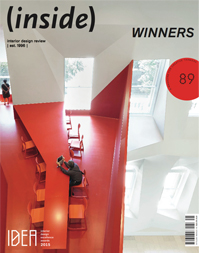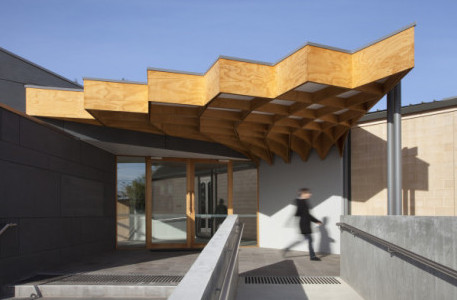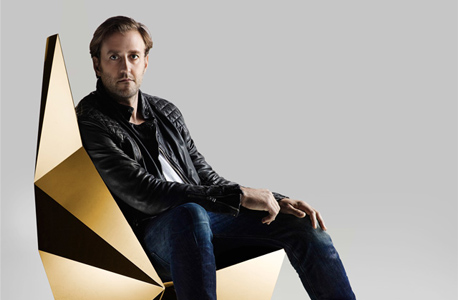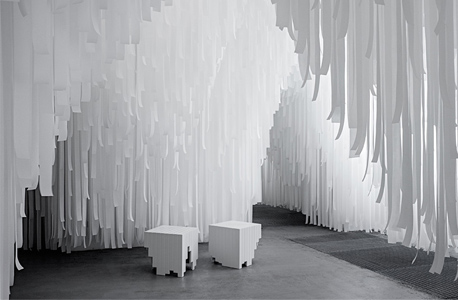
Culture at Risk: National Architecture Conference 2015
Culture at Risk: National Architecture Conference 2015
Share
This year’s National Architecture Conference brought forth a diversity of ideology and opinion, emphatically expressed at the Culture panel discussion.
Chaired by Andrew Mackenzie, director of CityLab competitions consultancy and one third of the 2015 conference’s creative team, the discussion centred on culture. Mackenzie led an insightful discussion with Ian McDougall of ARM, Cynthia Davidson and Deborah Saunt, beginning with the question, “is architecture important to contemporary culture? And is contemporary culture important to architecture?”
The ensuing discourse addressed the rapid and omnipresent impact of technology on practice, the insularity of the profession, the dispersion of ideology and the role of the Internet in digesting and representing architecture.
Cynthia Davidson, New york-based editor of tri-annual journal Log: Observations on Architecture and the Contemporary City, was selective yet forthcoming with her responses. As editor of a publication which actively cautions against the seductive power of the image, Davidson opined that the proliferation of birds’ eye architectural photography, of the type favoured by photographer Iwan Baan, strengthens appreciation of buildings as sculptural monoliths while neglecting their functional value at street level. Additionally, in New York post-September 11, she noted a shift in dialogue away from the discussion of buildings and architecture towards larger scale urbanism and spatial movement through the city. Stating that architecture is now “more reliant on narrative” in the information age, Davidson queried Ian McDougall following his explication of the William Barak building, asking “if [a building] has cultural meaning, does that mean it has to signify something?” Davidson also spoke of a sense of trepidation in the idea of Log entering the Twittersphere, baulking at the incongruity of the longform journal communicating in 140 characters or less. With a tongue-in-cheek request that the revelation would not leave the auditorium, Davidson disclosed her recent appointment as co-chair of the US Pavilion for the next Venice Architecture Biennale.
Ian McDougall, founding director of ARM Architecture and former professor of architecture and urban design at the University of Adelaide, identified a lack of diligence in young architects, citing the ease of accessibility of the Internet as a primary reason for complacency in the research and comprehension of local architecture. McDougall observed that though critical literature on Australian architecture exists in libraries, it is currently underrepresented on the internet, resulting in a flawed contemporary understanding of cultural and professional heritage. This point was contested by fellow panelist, UK architect Deborah Saunt, who suggested the potential for McDougall to engage in initiatives to increase representation of Australian architecture online. McDougall and Saunt later flagged the insular nature of the profession, urging architects to be more vocal advocates for their work, but to first ensure that they “have something to say!” McDougall expressed a disappointment “that the profession has lost its desire to become advocates at a political level”.
Particularly topical to the cultural debate in local terms, McDougall gave an insight into the intent behind ARM’s recently unveiled William Barak building. Logistically a “difficult thing to execute”, McDougall spoke of making an literal public face for the building “something as contentious and difficult as an image of one of the badly treated elders of the Wurundjeri,” and that from its prominent location on Swanston street, “it watches over the city, but it also makes everyone remember about that history”. For a further insight into indigenous identity in our built environment, including the William Barak building, read Building Indigenous awareness: Q+A with Rueben Berg, practicing architect and founder of Indigenous Architecture and Design Victoria.
Deborah Saunt, founder of award-winning architectural studio DSDHA and member of the prestigious RIBA Awards Group, emerged as one of the bold personalities of the conference. Saunt revealed her distaste for the common stereotype of the architect as ‘the genius in the tower’, rather defining the role as “inspired negotiator”, being inherently collaborative and connected to the work. The charismatic architect shared her amusement at a video generated as part of the publicity for a recent project where an actress depicting Saunt was shown to be serenely sketching the building in isolation, propagating the detrimental stereotype of the architect as an obscure creative being. Saunt gave insight into her practice’s approach, in “chasing out the ghosts of preconception,” by first sketching through projected ideas of how competitors may respond to the same brief. Saunt called for a more open discussion of architecture from the top down, indicating it is incumbent on RIBA and equivalent industry associations to take responsibility for establishing cultural agenda, as “the front door” of the profession. The outspoken and accomplished architect also revealed that she didn’t necessarily mind “putting on a pretty dress” for interviews, in the name of potentially broadening the discussion and awareness of architecture, and educating an untrained majority.
Did you attend the Culture panel discussion? Share your thoughts with us below.
Stay tuned for a further wrap of Risk by Dr Helen Norrie, 2014 National Architecture Conference creative director.
You Might also Like




















